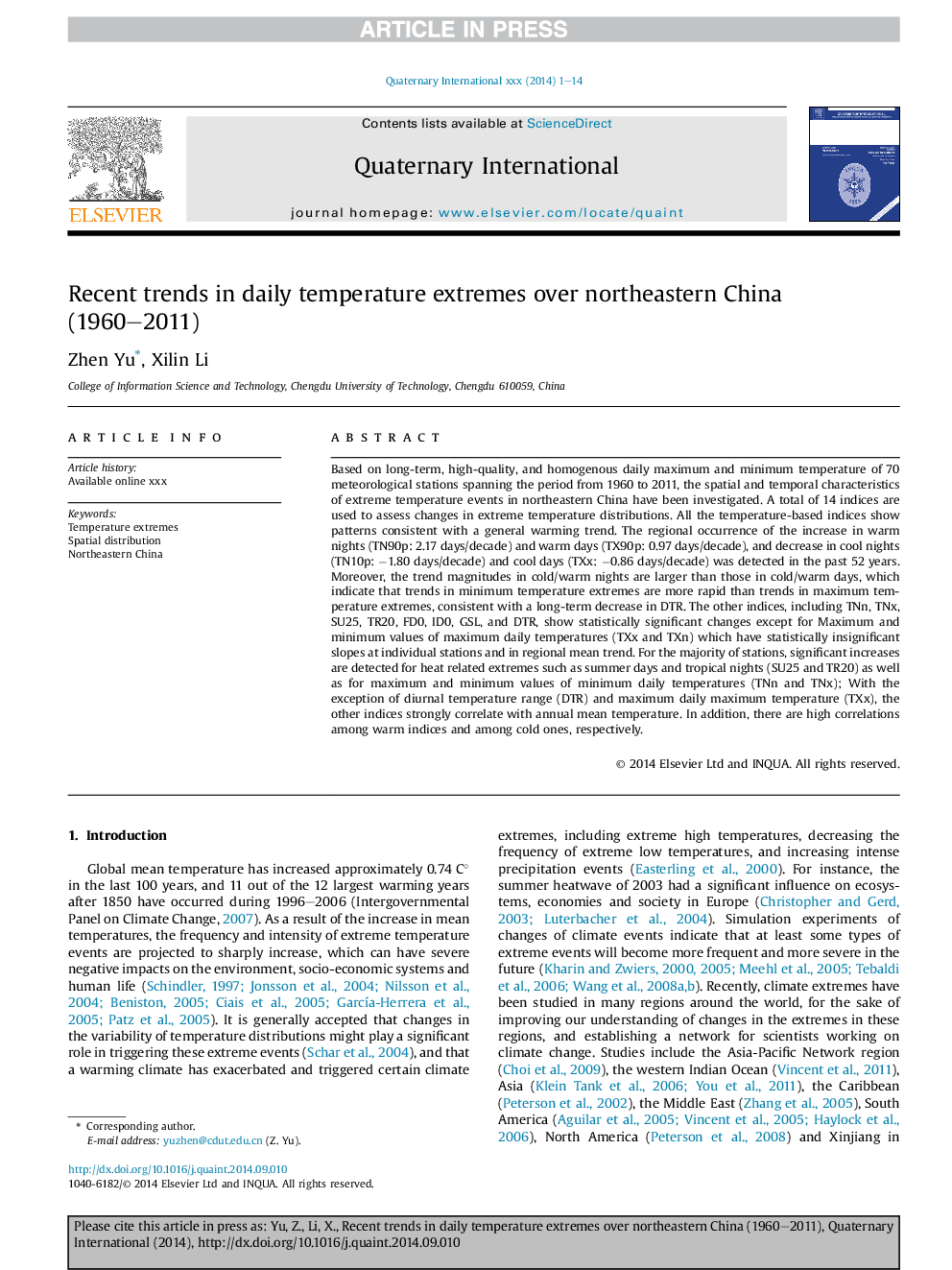| Article ID | Journal | Published Year | Pages | File Type |
|---|---|---|---|---|
| 7451454 | Quaternary International | 2015 | 14 Pages |
Abstract
Based on long-term, high-quality, and homogenous daily maximum and minimum temperature of 70 meteorological stations spanning the period from 1960 to 2011, the spatial and temporal characteristics of extreme temperature events in northeastern China have been investigated. A total of 14 indices are used to assess changes in extreme temperature distributions. All the temperature-based indices show patterns consistent with a general warming trend. The regional occurrence of the increase in warm nights (TN90p: 2.17Â days/decade) and warm days (TX90p: 0.97Â days/decade), and decrease in cool nights (TN10p:Â â1.80Â days/decade) and cool days (TXx:Â â0.86Â days/decade) was detected in the past 52 years. Moreover, the trend magnitudes in cold/warm nights are larger than those in cold/warm days, which indicate that trends in minimum temperature extremes are more rapid than trends in maximum temperature extremes, consistent with a long-term decrease in DTR. The other indices, including TNn, TNx, SU25, TR20, FD0, ID0, GSL, and DTR, show statistically significant changes except for Maximum and minimum values of maximum daily temperatures (TXx and TXn) which have statistically insignificant slopes at individual stations and in regional mean trend. For the majority of stations, significant increases are detected for heat related extremes such as summer days and tropical nights (SU25 and TR20) as well as for maximum and minimum values of minimum daily temperatures (TNn and TNx); With the exception of diurnal temperature range (DTR) and maximum daily maximum temperature (TXx), the other indices strongly correlate with annual mean temperature. In addition, there are high correlations among warm indices and among cold ones, respectively.
Related Topics
Physical Sciences and Engineering
Earth and Planetary Sciences
Geology
Authors
Zhen Yu, Xilin Li,
